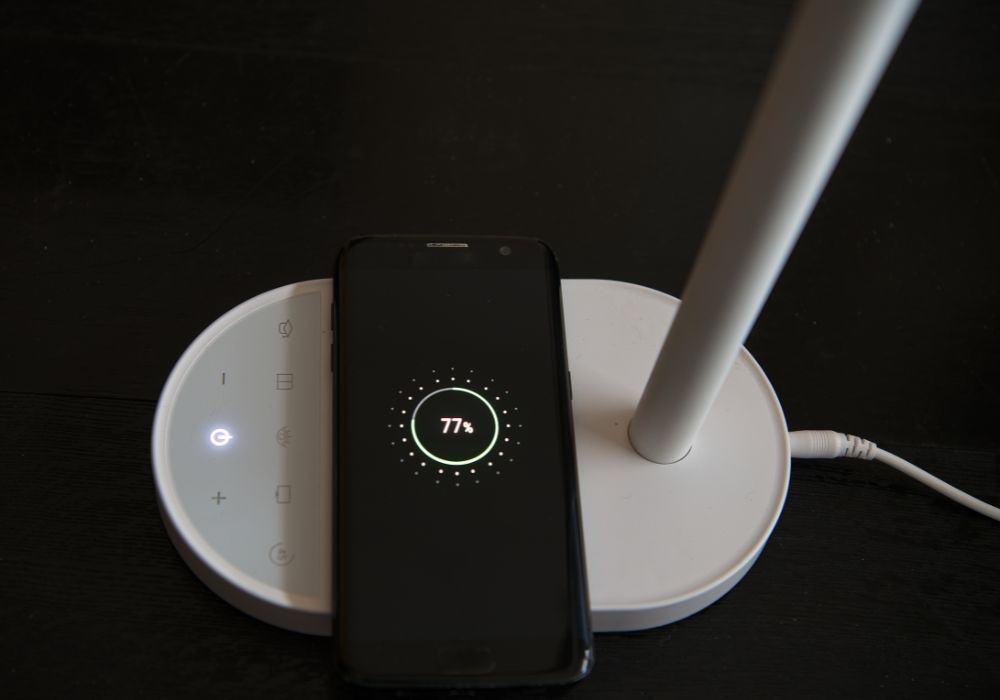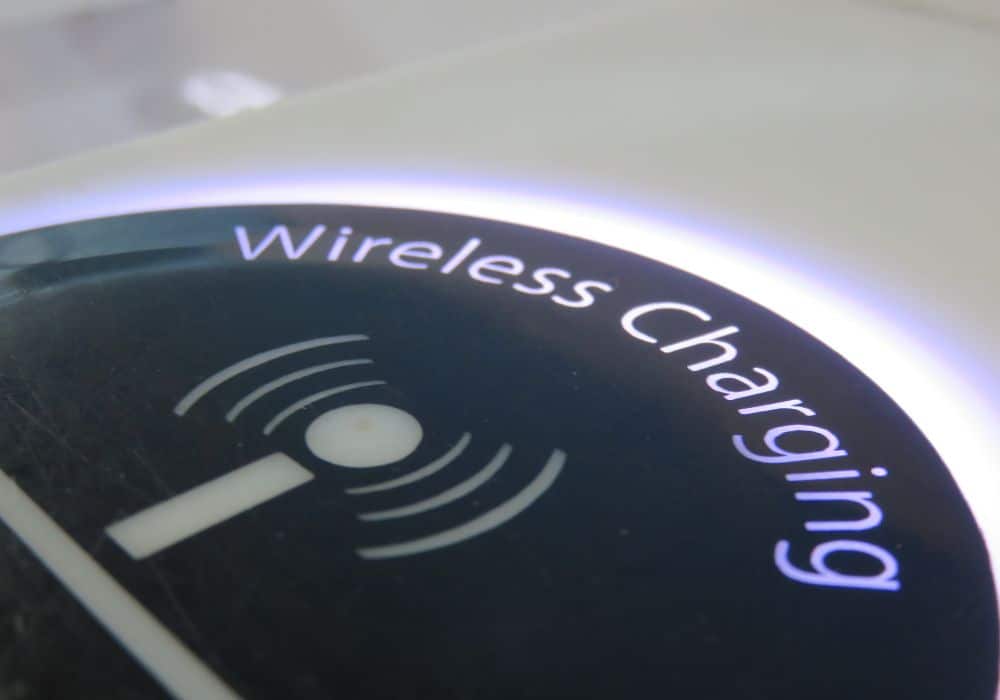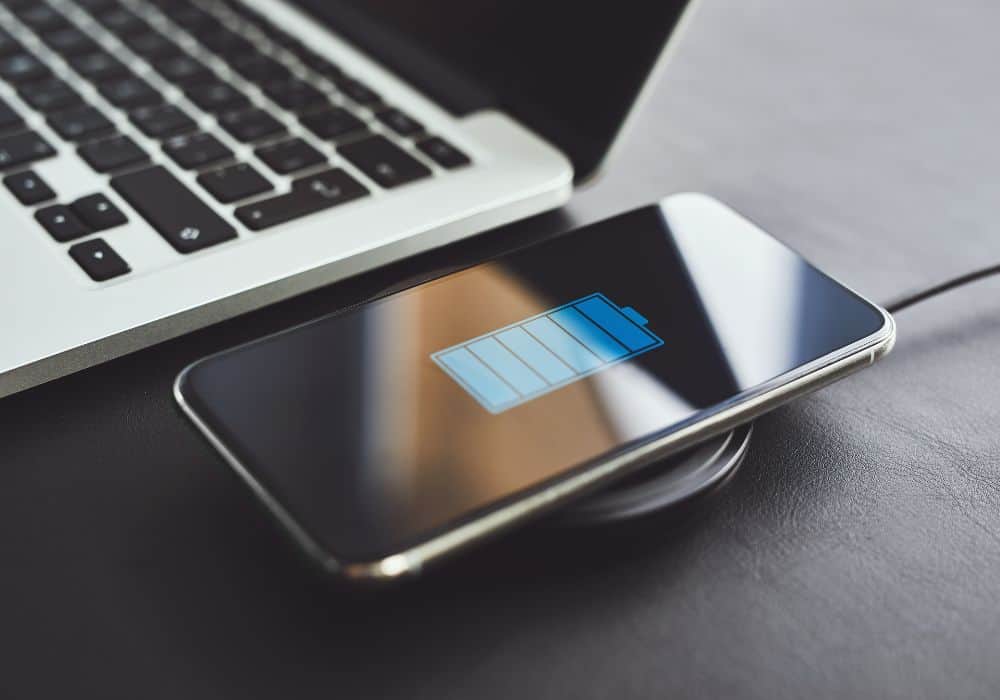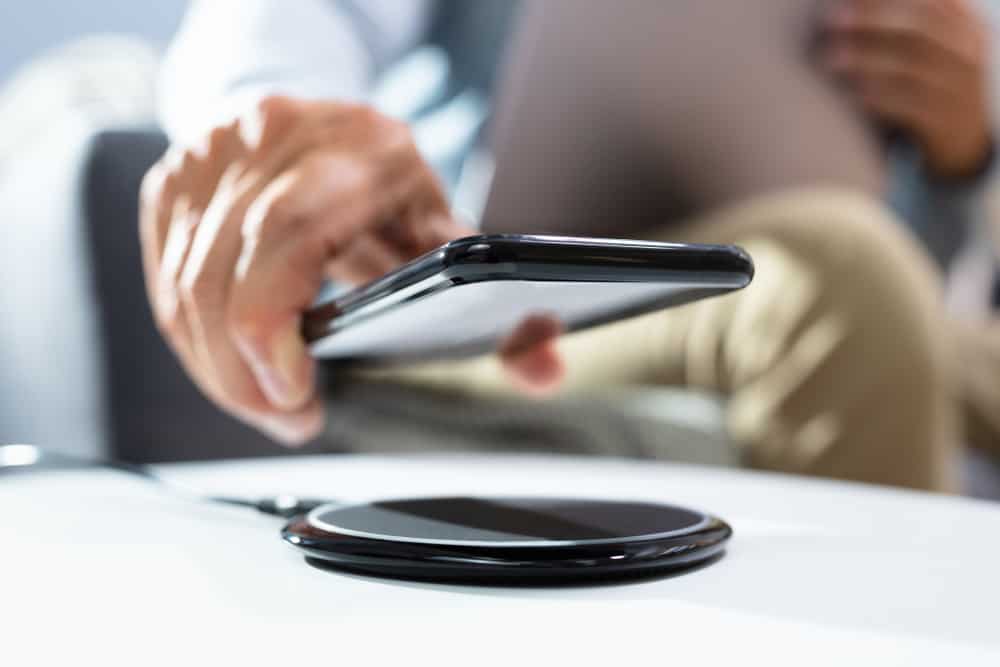Nowadays, most, if not all, of our tech can be charged wirelessly. It’s innovative, cheaper, convenient, and often much safer than traditional cable charging.
But although this technology is so common and has been around for nigh-on ten years, there’s still so much stigma and anxiety about wireless charging and its effect on our battery’s lifespan.
Often, people think it chargers slower than cables, is a fire risk and may hurt the battery’s capabilities in the long run.
In this article, we will demystify everything you thought you knew about wireless charging. We’ll find out if this practice does indeed degrade your battery and ways to identify problems in your battery’s health. We’ll also highlight opportunities you can take advantage of for a quicker, safer charge.
Table of Contents
How does wireless charging work?

The only way to understand what wireless chargers can and can’t do to your battery is to quickly learn how they work. Don’t worry; we’ll keep things simple.
Wireless charging uses ‘resonant inductive coupling,’ which means an electric current is sent via a magnetic field between your device and the wireless charging pad. This current is directly received by coils in your gadget, charging its battery in the process.
Not every smartphone or device supports wireless charging. It would be best to check the manufacturer’s guidelines to see the requirements and specifications for finding the most compatible wireless charger.
Does wireless charging degrade a battery?
By itself, wireless charging will not degrade or harm your smartphone battery.
But why do so many people falsely assume it harms our batteries? Well, it mainly comes down to heat. As we all know, high temperatures can impact battery longevity, increasing chemical reactions inside and leading to faster-than-expected degradation.
Because the electrical energy between your phone and charger generates heat and leaves it warm to touch, people often fear this increased temperature is corroding the battery inside. But the warmth felt from wireless charging is often not high enough to penetrate your phone’s natural defenses against overheating.
That said, there are some factors you must consider to protect your battery, charger, and device.
1. Avoid poor-quality wireless chargers
Quite often, a high-quality charger will prevent any harmful heat from affecting your phone and battery. Conversely, a lousy charger will allow excess heat to generate between the charger and the device.
Ensure your charger is always QI-certified. QI is a certification standard for safe wireless charging maintained by the Wireless Power Consortium. Chargers with this mark have undergone rigorous safety and quality testing for optimal charging.
2. Avoid fast-chargers
The phrase ‘speed kills’ rings true for chargers and batteries. “Fast-chargers” with high voltage often send large amounts of electricity to your battery. Though this charges it quicker than average, this will generate more heat between the phone and the charging pad.
A side effect of fast charging can be a dramatic increase in temperature. This can reduce the battery capacity, especially over consistent charging cycles, if the phone isn’t adequately equipped to deal with this increased heat.
Instead, opt for a safer, more reliable, and slower charging speed. Your phone may need more time, but this will ensure the battery never overheats unnecessarily.
3. Never charge in direct sunlight
People often underestimate the power and heat of warm weather on our electronics. If you live in a hot climate or have a long sunny spell of temperature on the horizon, consider keeping your smartphone or gadgets in cool, shaded places – especially if you’re left down to charge.
Direct sunlight can heat up and expand certain materials, loosening the structural integrity of both charger and phone and damaging and discoloring pixels and the phone’s camera capabilities.
4. Charge how you use your battery
A charge cycle is a process of charging and recharging a battery. Often, modern batteries have a set number of cycles (usually 300-50) before they reach their end. Wireless charging does not affect the length or use of a charge cycle, and so does not negatively affect your battery’s potential.
That said, how you use your phone can affect how often you need to charge wirelessly. Certain apps, such as gaming or live-streaming, consume considerable battery power. Apps that run in the background can also eat energy unnecessarily.
If you want to extend the life of your battery, regularly turn off hungry apps and processes. Avoid using your device while charging, so the charger does not have to work harder to feed energy.

5. Change how long you charge your battery for
Many people falsely assume a battery works best at 100% and that it can run until it hits 0% with no problems. But research has shown this to harm both phone battery life and its future capacity.
Especially if your phone uses lithium-ion batteries, avoid charging it to completion and avoid allowing it to run completely dry. Instead, opt for a healthier range of 20% to 80%.
Some phone manufacturers like Apple have built-in battery optimization in their iPhones, which ensures phone batteries cannot be overcharged above 80%. But for Android models, you may have to keep an eye on the battery charge to ensure no overcharging.
6. Wireless pad vs. stand
Wireless charging is constantly being improved and redesigned to fit the endless variety of types and sizes of devices. Two of the most common chargers come as a pad and an upright stand.
Although charging speeds are relatively the same between both models, an upright stand might suit your charging needs better, depending on how big your device is.
Expert Tips on using a wireless charger
- Wireless charging standards: A poorly made charger will cause problems for your device. Always ensure you use a Qi-certified wireless charger.
- Problems charging? Your phone will not charge if it is not making direct contact with the pad. Reposition your phone to connect directly to the pad. Remove dirt and debris and ensure the pad is dry before charging.
- Heat: Excess Heat can harm your battery’s original capacity. Ensure your device is in a cool place when left charging for long periods. Avoid direct sunlight whenever possible.
- Compatibility issues: Although a charging pad can charge a variety of devices, always ensure that it is compatible with your phone beforehand. In particular, pay close attention recommended watts of your phone.
- Try to reduce heat: If your device is prone to overheating, avoid using your device when it is charging. If the temperature is constantly high, consider replacing your charger with a cooling fan.
- Charging habits: Avoid allowing your battery to reach 0% before wireless charging, as this can speed up degradation. Instead, charge at 20%.
- Battery lifetime: You must acknowledge the lifespan of your battery. For example, the average mobile phone battery will only last 2-3 years. After this, you must replace it.
Tips on protecting your battery

As we’ve shown, wireless charging does not harm your battery; it can help you develop healthy charging habits that prolong your battery and improve its capacity.
That said, there are some lifestyle habits you can implement to help get the full years out of your battery, including:
- Reduce screen brightness on your device – it reduces power consumption and allows your battery to last longer.
- Close background apps – these continuously eat at battery power and force the charger to work harder at refueling your phone.
- If you have lousy Wifi connections, consider turning this feature off when not in use, as this can eat battery power considerably to try to regulate the link.
- Never deplete the battery to 0% or fully charge it to 100%. Aim for a range of 20% to 80%.
- If easy to access, regularly clean dust and debris off your battery.
- No matter how well you treat the battery, at some point, it will reach its end. Replace batteries after 2-3 years of use.
Conclusion
The convenience of wireless charging is unmatched. And whether you’ve just bought a brand new Samsung or iPhone X, no doubt a wireless charger has been included in the box. They are the new norm in technology.
Not only can you recharge your devices quicker and safer, but it also removes the trouble of broken cables and exposed wires and replacing charging ports.
If you have experienced battery degradation, you can rest assured that it did not stem from wireless charging. Look at other environmental factors, such as excess heat, as culprits. Simple changes to your charging habits can also help extend the lifespan and effectiveness of your battery’s performance.
If you still have questions about wireless charging and how it might affect battery degradation, please post a comment below.
As always, remember:
- Never compromise on the quality of a wireless charger. Always look for QI certification.
- Avoid excess heat. Charge in a cool place, away from direct sunlight.
- All batteries have a maximum lifespan. After 2-3 years, you may need to replace it.
